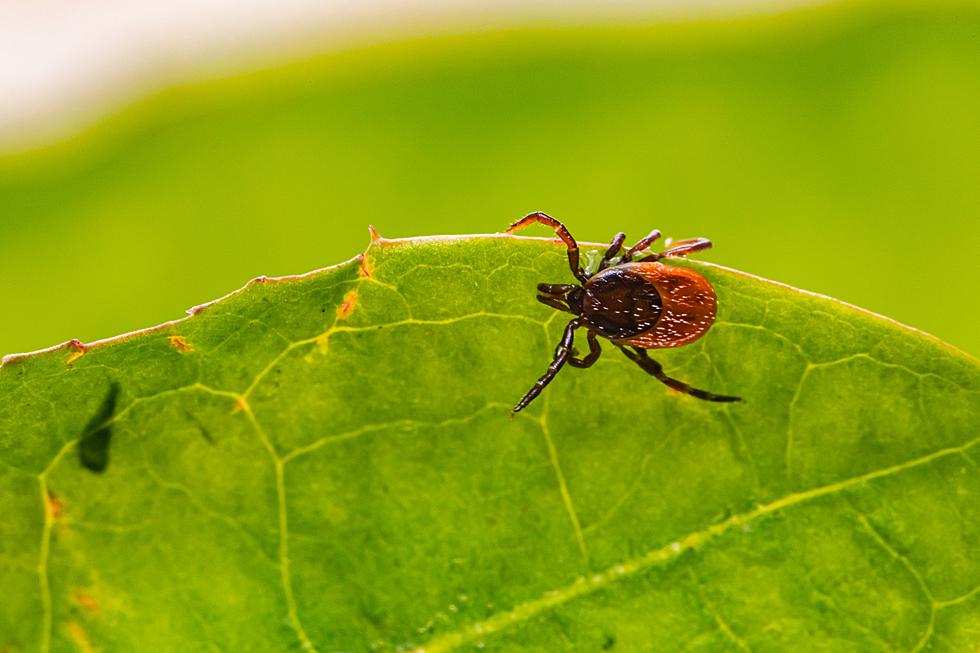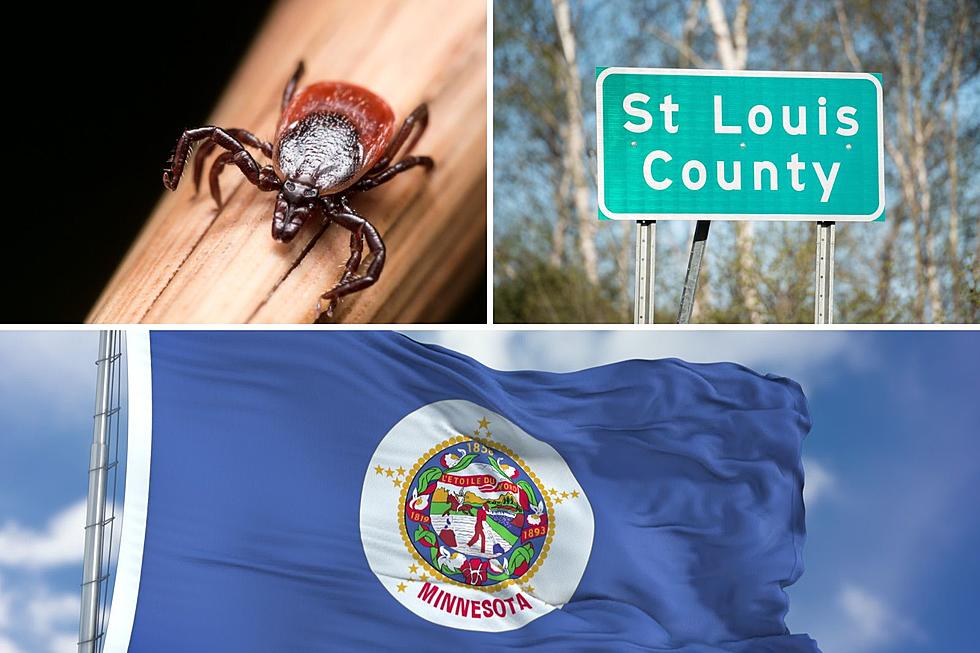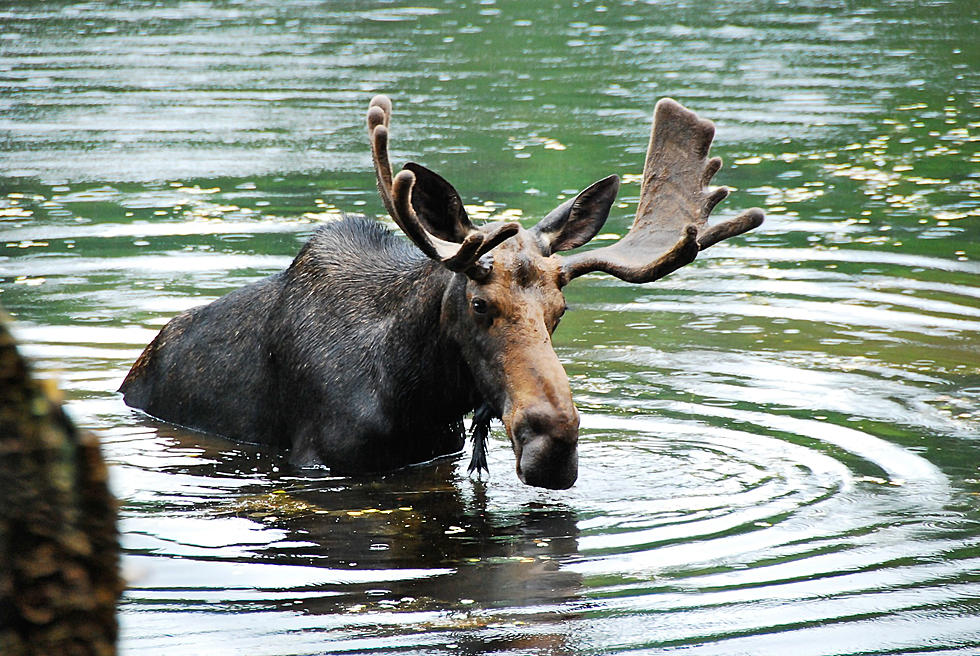
Unfortunately, Tick Season Has Already Arrived In Minnesota + Wisconsin
If you were hoping for a bit of a buffer between this winter's crazy amount of snow and the impending bug season, sorry. This year's tick season in Minnesota and Wisconsin is already well underway.
While we are certainly not at peak tick season yet, as the snow has receded across the region, ticks have started appearing for the season.
The Minnesota Department of Health explains that adult ticks start to emerge right after the snow melts. The general rule of thumb is that if the ground isn't covered in snow, you have a chance of encountering ticks.
While there are areas where snow is still on the ground, the last week has seen a lot of that snow disappear, opening the door for the tiny creatures to start their season.
When are the peaks of tick season?
There are a number of different types of ticks in Minnesota and Wisconsin, including deer ticks (also known as blacklegged ticks), Lone Star ticks (which has been linked to a disease that can cause meat allergies), and American dog ticks (also known as wood ticks).

While each of these varieties of ticks has slightly different activity and lifecycles, they are generally fairly similar. The MDH goes on to explain that activity will continue to increase through the spring, usually reaching its peak of activity in May.
While past the peak of activity, tick encounters remain possible through the rest of the summer, with higher activity through June and into July. Another peak of activity occurs in the fall, usually in mid to late September through October and leading up to when temperatures drop below freezing or we get a coating of snow.
Diseases you can get from ticks in Minnesota & Wisconsin
As the Wisconsin Department of Health Services explains, there are a number of tick-borne diseases in the region, most of which have also been reported in Minnesota, according to the MDH. Of the varieties of ticks, the deer ticks and Lone Star ticks are the most common disease carriers, with wood ticks being less common carriers of disease.
The most common varieties of tick-borne diseases in Minnesota and Wisconsin are Lyme disease and Anaplasmosis, both of which are spread by deer ticks. Other, less common diseases include Ehrlichiosis, Babesiosis, Spotted Fever Group Rickettsiosis, Powassan Virus, Borrelia miyamotoi, and Tularemia.
Highest-risk areas in Minnesota & Wisconsin
According to data from the Minnesota and Wisconsin departments of health, the highest areas of risk for tick-borne disease are in the central and northern parts of each state.
For Minnesota, this includes almost all counties north of the Twin Cities, and along the Mississippi River. These highest-risk areas are noted in dark red in the map below. moderate-risk areas flank the edges of this zone, with lower-risk areas on the southwest part of the state, where more farmland and prairie land persist.
In Wisconsin, they highlight the areas of highest risk for deer tick diseases like Lyme disease with a band of high-risk areas through Northcentral Wisconsin and Central Wisconsin (noted in dark green), with most of the rest of the northern 3/4 of the state being in the next-highest category of risk. Areas of moderate to low risk appear in southern Wisconsin.
Tick bite prevention and removal
While not every tick bite will result in illness, preventing tick bites is a crucial component of avoiding the diseases they carry. The Minnesota DNR recommends the following to reduce your risk:
- Walk in the center of trails to avoid picking up ticks from grass and brush
- Wear light-colored clothing so you can more easily spot ticks that might be on you
- Wear long pants, socks, or tick gaiters and appropriate footwear (closed-toe shoes or boots)
- Creating barriers to skin by tucking pants into socks or boots or long shirts into pants
- Properly use a repellant containing DEET or permethrin to repel ticks
- After being outdoors, get out of your clothing immediately and do a complete body check, shower, and "vigorously towel-dry", also making a point to quickly wash your clothing so ticks don't find their way around your home
- Regularly check pets for ticks
If you do get bitten by a tick, here's what you should do:
- Use tweezers to grasp the tick close to its mouth
- Gently and very slowly pull the tick straight outward
- Avoid squeezing the tick's body to avoid contact with disease-causing pathogens
- Wash the bite area and apply an antiseptic to the bite
- Watch for early signs or symptoms of disease.
You can find more information about tick-borne diseases and their symptoms from the Wisconsin Department of Health Services and the Minnesota Department of Health.




